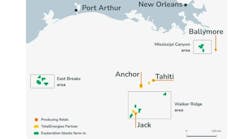Ian Kennedy
Partner, Oil & Gas
EC Harris Asia
Across the globe there are almost 2,000 major oil and gas projects identified as live or due to go live in the next three years. When all of these assets come into use, a massive annual expenditure will be required for their operation and upkeep. Some analysts predict that maintenance costs alone could account for $750 billion over the next 20 years.
Given this level of investment, it is paramount that this capital be used as efficiently as possible. While most offshore operators appear to understand the importance of minimizing their capex, less attention is given to limiting the cost of operating their assets. With most engineering, procurement, and construction (EPC) contracts, the aim is to keep overall life cycle costs to a minimum. However, many operators find that as completion deadlines draw near, pressure to "get the project signed off" can produce decisions that result in a legacy of unnecessarily high opex over the lifetime of the asset. Given that many of these assets are in operation for over 30 years, this haste to push a project through can very easily become an expensive mistake.
For a facility like an offshore production platform, the operational expenditure is dictated principally by three factors: the quantum of work carried out on the asset, the efficiency at which it can be delivered, and the agreed cost rate of the resource used here. In each case, by focusing on opex issues there is an opportunity to significantly reduce cost outlay. This focus should include maintenance strategies, work planning and scheduling, and contract and commercial management strategies.
While all of the issues mentioned above may appear to be distinct, they do, in fact, have complex interdependencies. For example, the technical design and degree of equipment redundancy impacts the maintenance strategy, which in turn impacts the skills required to maintain the facility. This in turn impacts the contracting strategy employed – can the equipment be maintained by staff, or are specialist contractors required?
In order to minimize lifecycle costs, all of these aspects of opex costs need to be considered during the front-end engineering design (FEED) stage. If they are not factored in at that juncture, operators will find themselves in a situation akin to trying to catch a handful of sand. While they may be able to plug some holes, the reality is that some cost inefficiencies will inevitably slip through their hands.
Maintenance costs typically comprise 20-30% of the overall opex figure, so in terms of driving efficiency savings, this is an obvious area for offshore operators to focus their attention. Maintenance plans for new facilities are often provided by the EPC contractor based on the original equipment manufacturer's operations and maintenance (OEM O&M) manuals. But while this approach ensures the strategy complies with warranty conditions, it usually overlooks two key points:
• First, these recommendations fail to factor in the operating context of the equipment – a "one size fits all" approach is clearly unrealistic since the operating environment for an offshore asset will be markedly different depending on whether it is in the Arabian Gulf, the North Sea, or the Arctic peninsula
• Second, the recommendations from OEMs do not take into account the criticality of the asset when it is installed in the offshore facility. To achieve optimal cost/performance balance, the maintenance regime adopted for a pump that is crucial to the production process with no standby and long lead time for replacement will quite evidently need to be very different to that employed for a less critical pump with a standby replacement.
To tackle the latter issue, each offshore operator needs to develop a clear understanding of how critical each asset is to ensure that the appropriate level of maintenance analysis is undertaken. With many operators unclear on the role each asset plays, the first step will be to carry out some form of analysis to help classify each asset into distinct categories such as vital, essential, or auxiliary. Depending on how they are classified, the offshore operator can then tailor a maintenance strategy appropriate to its status. By failing to consider asset criticality, many organizations end up adopting an overly expensive maintenance regime resulting in a higher opex, while also potentially under-maintaining highly critical assets and contributing to the risk of production losses.
Those owners who focus on the issues that affect operational costs and who implement the right processes during both the capex and opex phases can see their offshore assets deliver greater levels of return which will have a significant impact on their bottom line. Some recent examples within the industry show the potential to make savings ranging from $10-40 million per year by focusing on just 20-30% of the assets where maintenance costs are unnecessarily high.
When considered in these terms, the prize on offer appears obvious and an area that offshore operators should focus on as world oil demand continues to grow.
This page reflects viewpoints on the political, economic, cultural, technological, and environmental issues that shape the future of the petroleum industry. Offshore Magazine invites you to share your thoughts. Email your Beyond the Horizon manuscript to David Paganie at[email protected].
Offshore Articles Archives
View Oil and Gas Articles on PennEnergy.com


